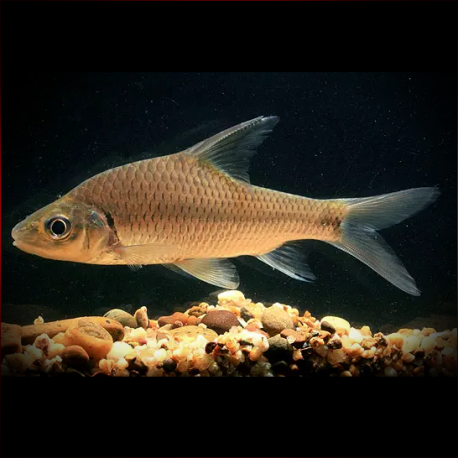Cyclocheilichthys Armatus
Cypriniformes Print
More info
Datasheet
| Minimum Tank Size | 650 litres / 171.71 US gallons |
| Maximum Size | 23.0cm / 9.06inches |
| Temperature | 20°C / 68.00°F - 26°C / 78.80°F |
| Hardness | 2.02dgH / 36ppm - 15.02dgH / 268ppm |
| pH | 6.0-8.0 |
General Description
Cyclocheilichthys Armatus, commonly known as Armatus, belongs to the family Cyprinidae. It is a riverine species found in various river drainages across Southeast Asia, particularly in countries like Laos, Cambodia, Thailand, and Vietnam. With a maximum size of 23.0cm, this species is known for its distinct features, including one or two pairs of barbels, a black blotch at the base of the caudal-fin, and rows of dark spots along the lateral scale rows.
Aquarium Setup
Armatus are best kept in larger aquarium setups with a minimum size of 650 litres. They thrive in well-oxygenated and clean water conditions, with preferred hardness ranging from 36-268ppm and a pH level of 6.0-8.0. It is recommended to furnish the tank appropriately as these fish tend to be gregarious and display better coloration when kept in groups of at least six. Suitable tankmates include various cyprinids, loaches, cichlids, catfish, and characins.
Behaviour
These fish exhibit mid-water to benthic foraging behavior, typically migrating to flooded riparian forests during the wet season for reproduction. They are gregarious by nature, showcasing improved coloration and reduced nervousness when kept in the company of conspecifics. However, large adults may intimidate slower or timid tank companions, so careful consideration should be made when selecting tankmates.
Feeding and Diet
In their natural habitat, Armatus primarily feed on small insects, insect larvae, crustaceans, and fry of other fish. In an aquarium setup, they should be offered a diet comprising small live and frozen foods like chironomid larvae, Daphnia, and Artemia. Additionally, supplementing their meals with high-quality dried flakes and granules ensures their optimal condition.
Reproduction & Dimorphism
There are no documented cases of Armatus breeding in captivity. In the wild, these fish are known to spawn in flooded zones towards the end of the wet season. Sexually mature females of this species tend to have a thicker body compared to males, showcasing a subtle sexual dimorphism.
Habitat and Distribution
Armatus is widely distributed across Southeast Asia, ranging from the Mekong region in Laos, Cambodia, and Vietnam to Thailand, Peninsular Malaysia, and the Greater Sunda Islands. These fish are commonly found in river basins, lakes, reservoirs, and artificial water bodies. Human interference, including damming, pollution, and overfishing, has impacted their natural habitat in certain areas, leading to adaptations in their distribution patterns.

